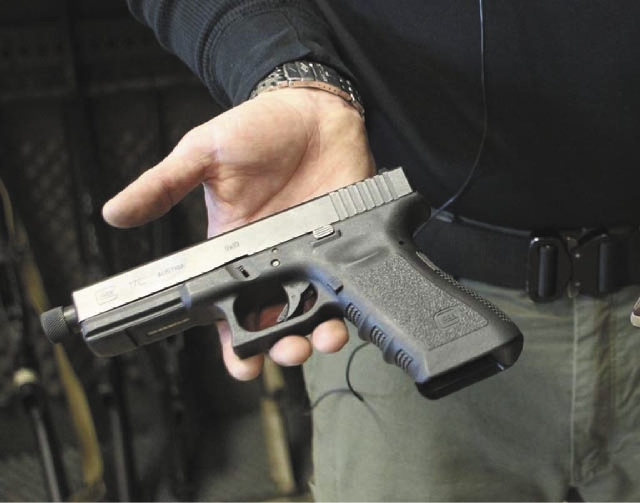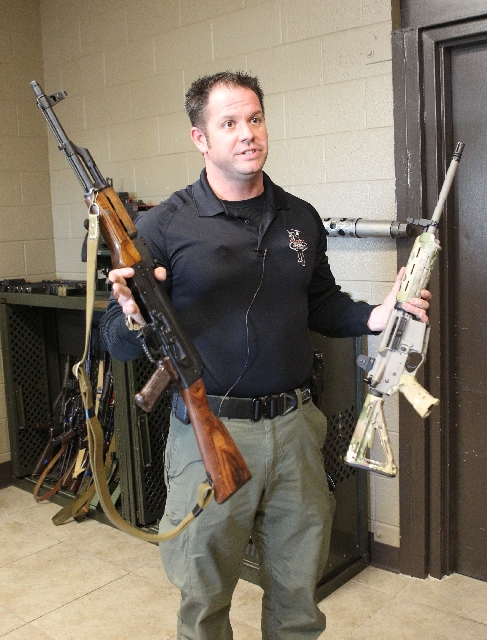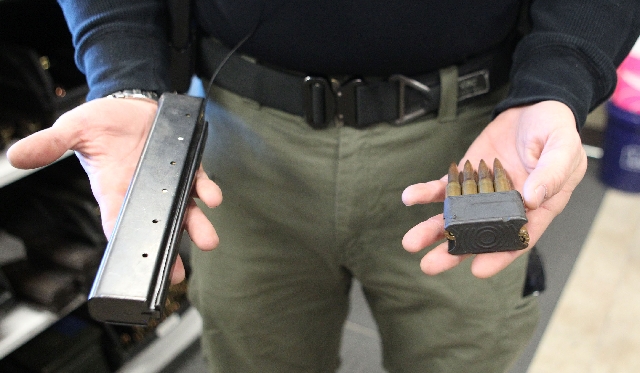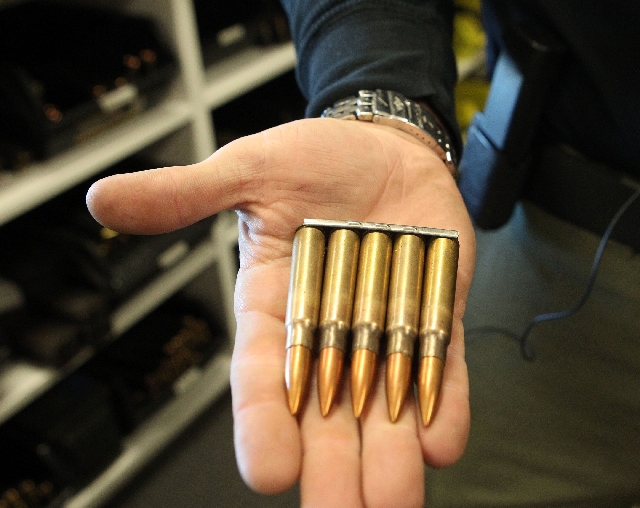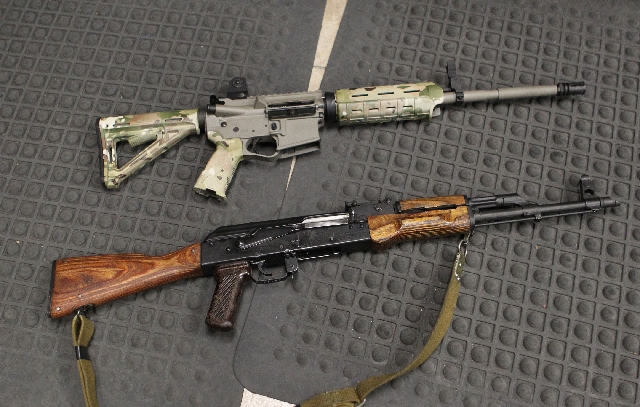Loaded words complicate gun debate
Battlefield Vegas, the indoor gun range just a short shot from the Strip, doesn’t quiz customers about their stance on gun control.
But if people are going to debate the issue between bursts of automatic fire aimed at paper targets, operations manager Matt Supnick would at least like them to use correct terms.
Supnick said that with the public engrossed in the most intense national conversation about gun control in years, he is frustrated that much of the talk involves inaccurate descriptions of firearms and their critical components, even by people in the middle of the debate.
“How much credibility does someone have if they can’t even use the proper terminology and definitions,” Supnick said of debates over assault weapons bans, background check requirements and other gun control measures roiling Congress and many state capitals.
By way of example, he reaches beneath the counter and retrieves a clip and a magazine, each loaded with ammunition.
During gun control debates people frequently confuse the two, Supnick said. In his left hand was a clip, a device in which the ammunition is exposed as it is fed into the firearm.
“When all the ammunition is expended, it will actually pop out of the top,” he said of the clip.
In his right was a magazine, which holds the ammunition and is attached to the firearm.
“If you look at a magazine, all the rounds are internal,” Supnick said.
Magazines can be attached, as in the case of a shotgun and many rifles, or detachable, as in the case of AR-15 rifles. That is the type of firearm that’s the subject of controversy, because one was used by the Newtown, Conn., school shooter who killed 20 children and six adults.
“Most of your modern firearms nowadays are magazine-fed,” Supnick said.
One common proposal in the wake of the shooting is to restrict the capacity of magazines to 10 rounds of ammunition. Although larger magazines are popularly referred to has high-capacity, that term is also loaded, Supnick said.
Proponents of the limit say it could reduce the number of people killed or injured in mass shootings by forcing shooters to reload more often.
But Supnick and others don’t like the phrase “high capacity.” They say it would be more accurate to refer to 10-round magazines as reduced or low capacity, since 30 rounds is standard for many rifle magazines and 17 rounds is standard for popular handguns, such as the Glock 17.
“A 30-round magazine ... that’s the most standard, common magazine there is,” Supnick said. “If different laws are implemented, we have to reduce the capacity of the magazine.”
In addition to wincing at the confusion of magazines with clips, Supnick bristles at the term assault rifle.
“This is not an assault rifle; this fires one round per trigger pull,” he said, holding up one rifle.
In the gun industry, firearms such as the AR-15 are referred to as modern sporting rifles. Supnick said referring to them as assault rifles leaves the impression that the weapons are automatic fire, meaning they will fire as long as the shooter holds the trigger.
The term carries a menacing tone, and gun proponents say it should be limited to true military-style weapons.
“The select fire, automatic rifle is an assault rifle,” Supnick said.
And, he said, it is extremely difficult and prohibitively expensive for the vast majority of consumers to legally purchase or possess an automatic weapon.
“As a consumer you could not walk into a store and buy one of these,” said Supnick, holding up an M4, the automatic version of an AR-15.
Although the label assault rifle is properly reserved for firearms with automatic fire capability, the notion that the term was coined by anti-gun advocates to demonize the weapons is inaccurate.
It actually dates back to the 1940s when the Germans developed a lightweight, automatic fire rifle and called it the Sturmgewehr, literally translated as “storm rifle” or more loosely as “assault rifle.”
The term broadened in the ensuing decades and came to be applied to semi-automatic varieties of rifles, even within the gun industry. But gun makers and enthusiasts drifted away from the term and back to a narrower definition as legislation to restrict assault rifles picked up steam.
The Violent Crime Control and Law Enforcement Act of 1994 attempted to ban assault weapons by listing 18 types of firearms that could no longer be sold to consumers.
But the ban, which expired in 2004, was widely circumvented because manufacturers could easily make guns similar to those on the banned list and legally sell them. Also, models on the list that were made before the ban went into effect remained available for resale.
Contact reporter Benjamin Spillman at
bspillman@reviewjournal.com or 702-383-0285 .



